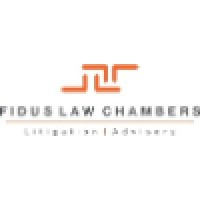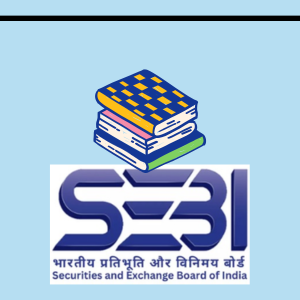
Introduction
In the competitive world of law, a legal portfolio is a comprehensive compilation of an attorney’s professional journey. It serves as a record of one’s educational background, work experiences, accomplishments, skills, and expertise. More than just a collection of documents, a legal portfolio is a powerful tool that showcases an attorney’s competence, credibility, and commitment to their legal practice. It stands as a testament to their abilities, making a compelling case to prospective employers, clients, and peers.
The purpose of this article is to guide legal professionals in the art of building a strong and effective legal portfolio. Whether you are a law student aiming to land your dream job, a seasoned attorney looking to impress potential clients, or a legal practitioner seeking to demonstrate your expertise, this article provides a roadmap to success.
Below are a few examples of different legal portfolios to help you understand how legal professionals can tailor their portfolios for specific purposes and audiences:
- Law School Graduate Portfolio
- Objective: Securing an associate position at a prestigious law firm.
- Resume: Highlighting academic achievements, relevant coursework, and moot court participation.
- Internship Experience: Detailing legal internships at reputable firms or organizations.
- Academic Transcripts: Including official transcripts to showcase high grades and coursework.
- Moot Court Record: Demonstrating strong oral and written advocacy skills.
- Legal Writing Samples: Including well-researched memos or briefs.
- Academic Awards: Showcasing academic honors and awards.
- Experienced Litigator Portfolio
- Objective: Attracting clients and demonstrating expertise in litigation.
- Resume: Focusing on a history of successful litigation cases.
- Notable Case Summaries: Providing concise summaries of key cases with outcomes.
- Client Testimonials: Including recommendations from satisfied clients.
- Legal Skills: Detailing strengths in research, negotiation, and trial advocacy.
- Awards and Recognitions: Showcasing awards such as “Top Litigator” or “Super Lawyer.”
- Sample Legal Briefs: Highlighting persuasive legal writing skills.
- Alternative Dispute Resolution (ADR) Specialist Portfolio
- Objective: Attracting clients seeking mediation and arbitration services.
- Resume: Focusing experience in ADR processes.
- Mediation and Arbitration Case Summaries: Showcasing successful resolution outcomes.
- ADR Training and Certifications: Demonstrating specialized training.
- Client Success Stories: Sharing case studies with positive client feedback.
- Publications: Including articles on ADR topics.
- Community Involvement: Highlighting volunteer mediation work.
Gather and Organize Your Documents
Organizing the following documents systematically within your legal portfolio is important to create a clear and comprehensive representation of your qualifications and experiences:
- Personal Information
- Resume or Curriculum Vitae: Your professional summary, highlighting key experiences, skills, and qualifications.
- Contact Information: Ensure that your current contact details, including phone numbers, email addresses, and professional website, are up-to-date.
- Bar Admissions: List the jurisdictions (from your respective State Bar Councils) where you are admitted to practice law, including admission dates and relevant bar association memberships.
- Educational Background
- Transcripts and Degrees: Provide official transcripts and details of degrees earned from law schools and other relevant educational institutions.
- Academic Awards and Honors: Highlight notable academic achievements such as Dean’s List, scholarships, or honors societies, and include any relevant certificates.
- Work Experience
- Legal Work History: You can offer a comprehensive work history, detailing your job titles, roles, and responsibilities at various law firms, corporate legal departments, or other legal organizations.
- Internships and Clerkships: You can describe your internship and clerkship experiences, emphasizing the tasks, responsibilities, and skills acquired during each role.
- Certifications and Specializations: You may include any certifications or specializations, such as board certifications or specific training relevant to your legal practice.
- Professional Development
- Legal Education Credits: You should document your ongoing legal education efforts by listing the titles, dates, and institutions where you completed courses, seminars, or workshops.
- Conferences and Seminars Attended: You can provide details of legal conferences, seminars, and workshops you’ve participated in, highlighting the topics and key insights gained.
- Publications and Writing Samples
- Legal Articles: You should include links or copies of legal articles you’ve authored, showcasing your legal knowledge and writing skills.
- Research Papers: Attach academic or professional research papers that demonstrate your expertise in specific areas of law or related fields.
Showcase Legal Skills and Expertise
You can showcase your legal skills and expertise in the following areas. By doing this, you can demonstrate your value as a legal professional and make a strong impression on potential employers, clients, or peers who review your legal portfolio.
- Legal Practice Areas:
You should clearly describe your primary and secondary practice areas, demonstrating your legal expertise in various fields of law. Make sure to provide specific examples or cases related to each practice area.
- Notable Cases
- Case Summaries: You should present concise summaries of notable legal cases you have worked on, outlining key facts and issues involved.
- Outcomes and Achievements: You should describe the results and achievements in these cases, including settlements, verdicts, or other significant outcomes.
- Skills and Competencies
- Legal Research and Writing: You can highlight your ability to conduct thorough legal research and write persuasive legal documents, such as briefs, contracts, and opinions.
- Litigation and Negotiation: You can showcase your experience and successes in litigation, including trials and negotiations.
- Client Relations: You can focus on your client management skills, showing how you build and maintain strong client relationships.
- Alternative Dispute Resolution (if you have expertise in ADR): You may describe your proficiency in ADR methods like mediation and arbitration, providing examples of successful resolutions.
- Awards and Recognitions:
You can list any awards, honors, or professional recognitions you have received throughout your legal career, such as “Lawyer of the Year” or “Top 40 Under 40.”
- Pro Bono and Community Involvement:
You can highlight your commitment to pro bono work and community involvement, showcasing how you contribute to social causes and underserved communities through legal services.
Create an Effective Portfolio Presentation
- Choosing the Right Format
You can make decisions while considering the advantages and considerations for selecting either a print or digital format for your legal portfolio and make sure to highlight the implications of each choice on your presentation and distribution.
- Design and Layout
- Cover Page: Design an eye-catching and professional cover page that includes your name, title, and contact information, setting the tone for your portfolio.
- Table of Contents: Create a clear and organized table of contents that allows readers to navigate your portfolio easily.
- Section Dividers: Use section dividers or tabs to separate different parts of your portfolio for clarity and visual appeal.
- Writing a Compelling Introduction:
Draft an engaging introduction that provides an overview of your legal career, your unique value proposition, and what readers can expect from your portfolio.
- Organizing Sections and Documents:
Make sure to explain how you’ve organized your portfolio sections, such as starting with personal information and progressing through your educational background, work experience, skills, and achievements and provide a rationale for this order and any variations based on your objectives.
- Using Visuals and Multimedia:
You should choose carefully the effective use of visuals and multimedia elements in your portfolio, such as incorporating images, charts, or videos to illustrate key points and make your portfolio visually appealing.
- Proofreading and Editing:
Make sure to focus on the importance of thoroughly proofreading and editing your portfolio to ensure it is free from errors, inconsistencies, and typos. You may share tips and best practices for this critical step in the portfolio creation process.
The Dos and Don’ts
- Best Practices
- Tailor Your Portfolio: You may customize your portfolio for its intended purpose, whether it’s for job applications, client meetings, or networking and highlight the most relevant experiences and achievements.
- Clarity and Conciseness: Ensure your portfolio is well-organized and concise. Use clear headings and bullet points to make it easy for readers to find information.
- Showcase Achievements: You can highlight your accomplishments and successful cases prominently. Include specific outcomes, such as settlements, verdicts, or significant contributions.
- Visual Appeal: Use visuals, charts, and multimedia sparingly but effectively to enhance your portfolio’s visual appeal and engage the reader.
- Consistency in Formatting: Make sure to maintain a consistent format throughout your portfolio, including fonts, colors, and alignment, to create a professional and polished look.
- Regular Updates: Keep your portfolio up to date by adding recent accomplishments, certifications, or publications to demonstrate ongoing professional development.
- Professional Proofreading: Ensure that your portfolio is error-free. You may have it reviewed by a colleague or professional editor to catch any grammatical or typographical mistakes.
- Common Mistakes to Avoid
- Overloading with Information: Avoid including every detail of your legal career. Be selective, focusing on the most relevant and impressive aspects to prevent overwhelming readers.
- Lack of Focus: Don’t present a vague or generic portfolio. You should clearly define your objectives and tailor your content to meet those objectives.
- Disorganization: Don’t present a disorganized portfolio without a clear structure. Ensure a logical flow, with information presented in a cohesive manner.
- Neglecting Proofreading: Failing to proofread your portfolio can leave a negative impression. Please note that the typos and errors can suggest a lack of attention to detail.
- Ignoring Visuals: While visuals can enhance your portfolio, don’t overdo it. Unnecessary graphics or a cluttered design can distract from your content.
- Being Overly Modest: Be confident in presenting your accomplishments without being overly boastful and strike a balance that reflects your achievements accurately.
- Neglecting Updates: Don’t let your portfolio become outdated. You should regularly update it to reflect your current status and achievements.
This article has been written by Team YLCC. For any other queries, reach out to us at: queries.ylcc@gmail.com






